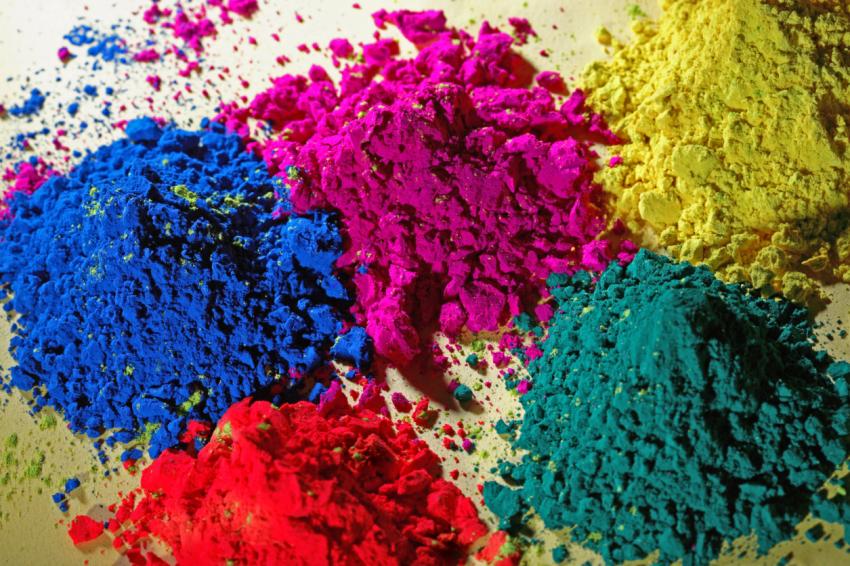Painting a Better Picture of Demand
AkzoNobel Turns to Terra Technology to Cut Excess Inventory and Improve Customer Service
Eliminating Inefficiency - When paint and specialty chemicals producer AkzoNobel looked to improve customer service and raise return on capital by cutting excess inventory, it turned to Terra Technology. Alain Crottaz, EMEA Planning Director at AkzoNobel, explains the business drivers behind the company's decision to implement Demand Sensing and Multi-Enterprise Inventory Optimization in Europe and Africa.
"As part of a larger supply chain efficiency program, we were looking for a single solution to achieve three strategic goals: providing higher customer service, cutting excess inventory (in particular, safety stock driven by elevated forecast error), and transforming available point-of-sale (POS) data into value for AkzoNobel and its customers," explains Crottaz.
Higher Customer Service
AkzoNobel has a complex supply chain with more than 50,000 products within the Europe, Middle East and Africa (EMEA) paint business. "Our first challenge was to enhance customer service by improving the way we predict client demand at a more granular level," says Crottaz. Like many companies, AkzoNobel's forecasts were traditionally planned by item-group and generally in a linear fashion. "These splits add considerable error and make it more challenging to meet customer service objectives," continues Crottaz. "We wanted a way to forecast each item at each depot, eliminating the inefficiency of using splits. We also wanted a system that would help us cut extreme error which is by far the most disruptive and costly to the supply chain." Extreme error occurs when shipments exceed or fall short of forecasts by twice or more. Extreme oversell error puts service at risk potentially hurting revenue and lowers margins through expedited product shipments between depots. Extreme undersell error means excessively high inventory positions, hurting return on capital.
Cutting Inventory
"Our second goal with the new software is to improve working capital and to free cash by reducing inventory by more than 10%," says Crottaz. Lower stock also helps profitability by lowering warehouse and logistics costs with third-party suppliers.
Creating an Actionable Response from Point-of-Sale
"The third objective is to transform available POS data into value for our company and customers," explains Crottaz. Daily retailer data contains valuable information on future orders. The challenge was to find a way to reliably extract this information in time to respond to market changes. Crottaz continues, "SAP's APO Demand Planning is limited to traditional forecasting methods that predict demand from prior sales, so we looked to augment the SAP engine with a solution that can use POS to sense demand and create an actionable response."
Choosing the Right Technology
So why did AkzoNobel choose Terra? With ten years of experience at Coca-Cola, Crottaz knew that FMCG (Fast-Moving Consumer Goods) companies like Procter & Gamble successfully use POS to improve forecast accuracy and better serve retailers. "We focused on Terra because their Demand Sensing solution is the only one to have solid references from multinational companies with large, complex supply chains," says Crottaz. "Their software is used by some of the world's largest manufacturers to plan demand in more than 160 countries."
The results of a pilot program made the decision clear. Weekly forecast error for AkzoNobel's paint business in United Kingdom, France, Germany, Netherlands and Ireland was reduced by 29% for the first week of forecast. Demand Sensing works seamlessly with AkzoNobel's current SAP systems. Crottaz explains: "Demand Sensing sits between our SAP Demand Planning (DP) and Supply Network Planning (SNP) modules. Forecasts are sent from Demand Planning into Terra's Demand Sensing engine, along with other current demand signals from the supply chain, such as retailer POS. Terra's algorithms analyze all of this data to create the most likely prediction of future sales. Demand Sensing then publishes daily forecasts for the next 90 days directly to SNP."
The Value of Daily Information
The full value of using POS data comes from being able to make supply decisions in tune with current market realities. "Retailer data received every day contains valuable new information about changes in demand," adds Crottaz. "Daily forecasts allow us to use this information in our supply decisions and quickly respond to changes. Every night, Demand Sensing recalculates and republishes four to six weeks of daily forecasts using the latest information to create the most accurate picture of current demand." With AkzoNobel's complex network, that means creating more than 6 million unique forecasts daily. Of course, it is not possible for planners to review millions of new forecasts each night. Instead, the forecasts are published directly to SNP, making it a "touchless" system. While planners can override Demand Sensing's recommendations, the sophisticated algorithms perform best when left alone.
The Multi-Enterprise Inventory Optimization (MIO) tool is used to convert Demand Sensing's accurate daily forecasts into lower safety stock. Crottaz: "While a number of vendors offer inventory optimization solutions, we looked for a single integrated solution to address both our forecasting and inventory objectives. Terra's solutions are designed to work together at the most granular level, providing a seamless way to maximize the financial benefits of our new accurate forecasts. "
Today, Demand Sensing and MIO are being deployed throughout AkzoNobel's EMEA region and are planned to go live in early 2014, starting with two important countries for their paint business ̶ the United Kingdom and France.






